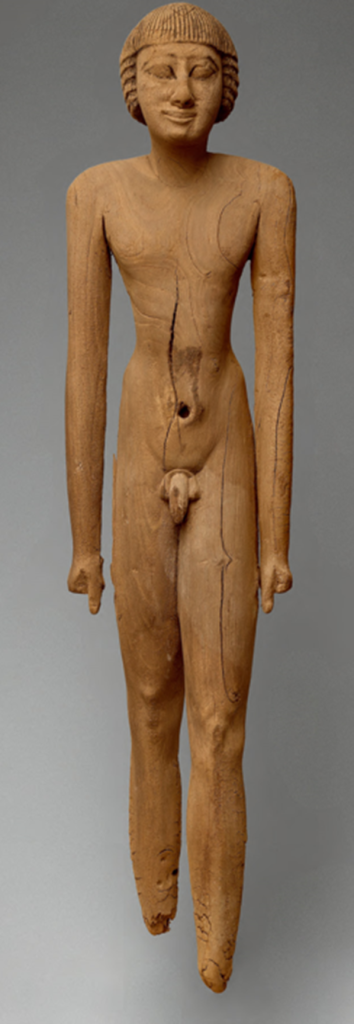
Name of Artifact: Striding Nude Man
Original Country: Egypt
Year of Production: Old Kingdom, Dynasty 6, reign of Merenre or Pepy II (ca. 2255-2152 B.C.)
Material: Wood
Dimensions: H. 18 3/8 in. (46.6 cm)
Current Location: The Metropolitan Museum of Art, New York, USA
Background Information:
This wooden statue, depicting a striding nude man, is a ka-statue from ancient Egypt, dating back to the Old Kingdom, specifically the reign of Merenre or Pepy II (ca. 2255-2152 B.C.). Ka-statues were created for use in the funerary cult, intended to represent the deceased and allow them to accept offerings from the living in the afterlife. Typically, such statues depicted their owners in their best attire, including a pleated kilt, jewelry, and styled hair. However, the man shown here wears only a short wig of tightly layered curls.
His large head, long body and limbs, and narrow waist are characteristic of the late Old Kingdom, a period when male nudity in ka-statues became more common. The reasons for this shift are not entirely understood, but it is thought to have been a way of preparing the deceased for rebirth into the next life, mimicking the way a baby arrives into the world. Based on rare depictions and written records, Egyptian men were circumcised when they reached puberty, although a specific age is unknown. Interestingly, circumcision is not consistently represented in nude male statues, possibly due to varying beliefs about how one should be depicted when preparing for the journey into the afterlife. The poor preservation of this statue makes it difficult to determine how this official was prepared for the afterlife.
